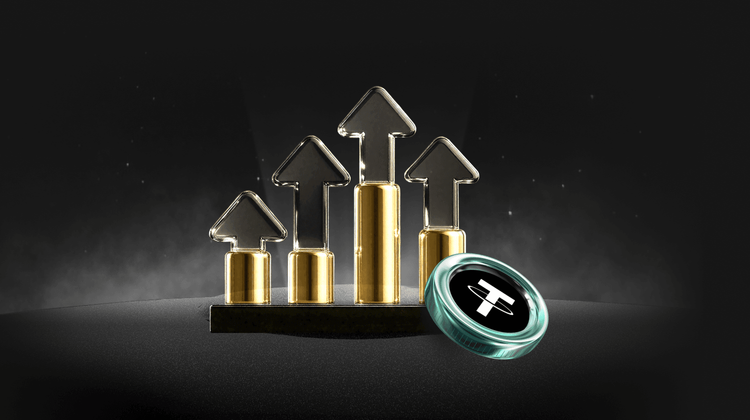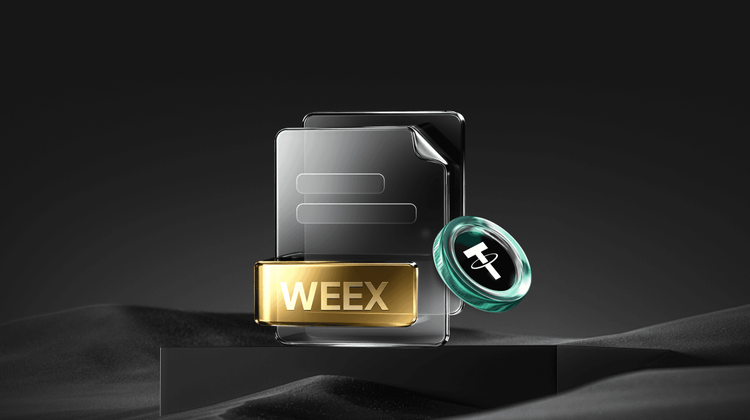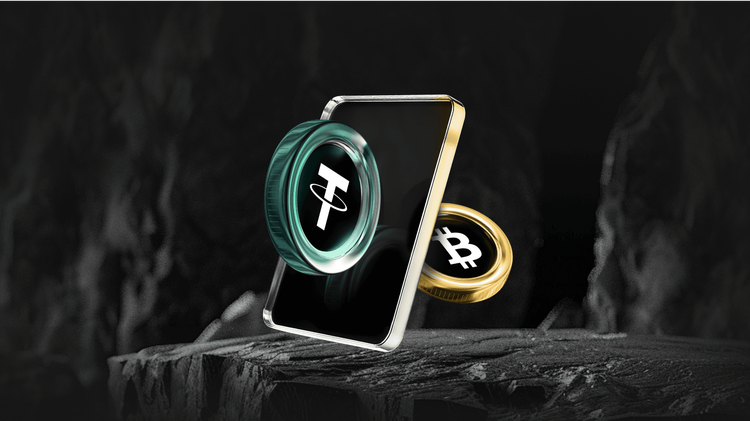DeFi's Self-Sovereign Identity: Reshaping Finance with AI
Source: OKX

OKX Ventures recently held an online event with the theme "Autonomous Agents Reshaping DeFi" (Twitter Space), delving into one of the most exciting cross-disciplinary areas in Web3: the rise of DeFi autonomous agents.
This discussion went beyond the early concept hype of AI chatbots and tackled the core questions: How can autonomous agents create real value, manage risk, and fundamentally reshape the user experience of decentralized finance? To gain firsthand insights from builders, we invited four industry pioneers who are dedicated to shaping the future of Agentic Finance:
• Cambrian Network's CEO & Founder Sam
• Almanak's CEO & Founder Neo
• Giza's CEO & Founder Renç
• Makina's Product Lead Colin
AMA Content Summary:
1. AI is not an incremental improvement on DeFi but a paradigm shift. The goal is to transition DeFi from its current complex, product-centric model to a simple, user-centric personalized service. Ultimately, enabling users to autonomously achieve their financial goals without requiring deep technical knowledge.
2. Clear delineation of AI's role: "Off-chain brain," not "on-chain hand." AI's current role in DeFi is strictly defined. It primarily serves as an "off-chain brain" for complex reasoning, data analysis, understanding user intent, and generating deterministic and verifiable strategy code. The AI itself does not directly touch or manage on-chain funds; the final execution is based on auditable, traditional finance-like logic.
3. Security-first approach: Managing risk through "human oversight + technical guardrails." Prioritizing security and risk control is crucial to address user concerns about AI going rogue. The core solution is: AI operations must take place within a predetermined "guardrail" set by human risk managers and enforced by code, and the generated strategy code is fully auditable and verifiable by humans. This ensures that AI decisions are controllable and traceable.
4. Serving Two Types of Customers: Enhancing Efficiency for Institutions and Lowering the Barrier for Retail Users. The product targets both institutional and retail users but in different ways. Institutional clients such as hedge funds and DAOs benefit from AI to significantly reduce the cost and time of strategy development and operation. On the other hand, retail users experience "complete abstraction," where all the complexities of DeFi are hidden, and users only need to express simple financial goals (e.g., "I want to earn stable yield"), leaving the rest to the agent.
5. Ecosystem Synergy: Coordinated Development between the Application Layer and Infrastructure Layer. Achieving Agentic DeFi requires a comprehensive ecosystem. This includes not only user-facing strategy application layers like Giza and Almanak but also a secure, cross-chain execution environment layer known as the "orbit/settlement" layer, such as Makina, and an infrastructure layer like Cambrian Network that provides reliable, verifiable data "fuel" for the agents.
6. Ultimate Goal: Democratizing Professional Financial Strategies. Through AI agents, the goal is to break down the barrier in traditional finance where only a few have access to complex quantitative strategies. Delivering hedge fund-level strategies that traditionally cost millions of dollars and months to develop at a very low cost and high speed to everyone, truly achieving financial inclusion.
AMA Questions and Discussion Original Text:
1. Product and Key Focus Introduction
• Sam (Cambrian Network):
My career began at one of the US national laboratories, working on cryptography primarily focusing on reverse-engineering cryptographic hardware. I then obtained a Ph.D. in reinforcement learning from the University of California, Santa Barbara. Subsequently, I founded my first company, Semiotic Labs, which was the core development team behind The Graph protocol, with a focus on AI, verifiability, and The Graph's payment system.
During that time, we did a lot of work related to agents. For example, in 2022, we released the first batch of reinforcement learning agents for dynamic pricing within The Graph. In 2023, we launched the first publicly available blockchain data terminal, where users could query real-time and historical data using natural language-generated SQL. By 2024, based on this experience and our strong belief in the immediate impact of AI and the increasing importance of cryptocurrency in the global economy, we decided to incubate Cambrian from Semiotic. Cambrian focuses on providing on-chain and off-chain financial intelligence. Providing such intelligence to the agents is our beachhead market.
• Neo (Almanak):
I've been in this field for nine years. Before founding Almanak, I ran an organization that provided data science and consulting services for DeFi, trading, and crypto asset management, so I'm very familiar with how this space operates.
Regarding Almanak, we've been in the market for four years. We like to call ourselves a vibe coding company, you can think of us as the Cursor of the DeFi space. Essentially, we use AI agents to discover and build complex trading and asset management strategies. These strategies are fully verifiable deterministic code. You can think of these strategies as the same as any hedge fund would use to trade.
• Renç (Giza):
I come from a product and marketing background, and prior to founding Giza, I was a product lead at Johnson & Johnson for five years. During this time, I also built smart contract systems spanning various financial use cases. I've been fortunate to have a team with backgrounds in machine learning and data science, so we approach more from the intersection of ML and AI with financial experience.
Since 2022, we've been building Giza. Giza builds autonomous financial agents - these are self-operating systems capable of executing complex financial strategies on behalf of users and institutions with zero operational overhead. I would say, it's our version of "banking the unbanked." To us, financial exclusion is not just about having a secure account to store your continuously inflating fiat, it's more about being cut off from various opportunities. Can you adapt to changing markets, leverage these massive opportunities, and mitigate risks when needed? That's the question we aim to answer. Our work at Giza is to democratize all of these capabilities.
• Colin (Makina):
I lead product at Makina. I joined the team about four months ago. I've been in the crypto space for over a decade. My background started in traditional finance, and I got into DeFi around 2016 and have been building products since then.
At Makina, we're focused on structuring what we call "DeFi execution." Beyond strategies and vaults, what we're truly interested in is creating a secure and reliable way to interact with any DeFi protocol or any EVM. This is crucial for anyone looking to run a strategy, whether it's done by humans in a more traditional sense, or through more passive or automated strategies, or through AI-driven agent-based ones.
We approach this issue from multiple angles. First, we focus on the role we refer to as "operators." This is similar to the "curators" you see in other protocols. They can conduct transactions securely while having control over what they can and cannot do. Additionally, we heavily utilize AI ourselves to enhance the user experience, such as providing better recommendations, a greater understanding of what users are doing, and exploring different ways to integrate new protocols to ensure that whether it is humans, agents, or other types of algorithms operating the treasury, they can quickly onboard securely and create maximum value.
2. What inspired you to start the current project? Why do you believe AI will bring value to your product, and what is the key value proposition?
• Sam (Cambrian Network):
I completed my Ph.D. in December 2019. Reinforcement learning was very hot at that time, but in 2019, we were in a bear market for reinforcement learning. That was one of the reasons why we initially focused on fully homomorphic encryption when we started the company.
However, when GPT was released in 2022, I was initially just as blown away as everyone else. But I actually thought we were at the beginning of a bubble at that time—I know many people today also think we are in a bubble. By 2023, a year after GPT was released, I kept seeing progress, and I developed a deep belief, which I still hold to this day, that we are at the beginning of a new revolution, with the previous revolution being the internet revolution. Before that, we had the Silicon Valley revolution, and going further back, we had the industrial revolution, and so on.
So, we are in the early years of a new revolution that is not going away. I encourage everyone here to be prepared for the fact that the capabilities of AI will double every year in the foreseeable future, impacting everything, every aspect of our lives, and it has already begun.
In addition to this belief, I have been involved in DeFi. As early as 2021, my previous company created Odos.xyz, which we spun out. It is a DEX aggregator. So, I have a deep conviction about financial applications and the financial freedom and literacy brought by cryptocurrency.
During the pilot projects and experimental periods mentioned in our introduction, one of the most difficult things I noticed was how challenging it was to obtain data and information about what was happening on-chain and other critical information for on-chain and off-chain financial decisions, which are vital for financial decision-making. This is why we are focusing on Cambrian. We believe that every project involved in agent-based finance or autonomous finance needs reliable, fast, comprehensive, and verifiable information to feed their agents. This is crucial for the success of these projects, so we decided to focus on financial intelligence.
• Neo (Almanak):
We like to call ourselves "AI for DeFi." As for inspiration, Almanak was originally a company using AI to optimize trading and asset management strategies. We have always worked with large asset management firms and major allocators, so we always had access to large amounts of capital. Almanak has been around for four years now.
Three years ago, when the ChatGPT craze started, we knew it was going to be significant. So we asked those big clients: "Hey, what would make you confidently hand your money over to AI for management?" They said—these are very large allocators of capital—that they would never deposit more than, say, $100. They were very afraid of AI manipulation, indirect cues injection, and all sorts of "unknown unknowns." Or put simply, when money is lost, they want someone to sue.
So, in conversations with these institutions managing tens of billions of dollars, we asked ourselves: "Well, what is AI really good at?" Today's AI is best at coding. Its coding speed is hundreds of times faster than an average human. AI is also very good at reasoning; it processes information at a rate billions of times faster than a human.
So we grabbed these two characteristics and applied them to Almanak. We created an "Agentic Swarm"—or a team of agent clusters—their objective function is: to write a high-performance strategy, discover market opportunities, manage market dynamics, optimize existing strategies, and feed all this information back to the user.
In our ecosystem, AI collaborates with the user. It gives you ideas about strategies, about optimizations, and ultimately implements the code. However, if something goes wrong, those hedge funds will look for you. What we have created is a way to reduce the time to market for developing any complex financial strategy from months to minutes. And we have reduced the cost of developing such strategies from millions of dollars to just a few dollars, or even less than ten dollars, depending on the strategy's complexity.
Once this strategy is created, it is just like any strategy used by any hedge fund. It is deterministic, verifiable, you can backtest it, simulate it, deploy it—so you know what will happen. AI will never touch your funds. AI only enhances the strategy creation and discovery process but never touches the funds. So far, this approach has been effective. We have seen the confidence of those large allocators, and our current Total Value Locked (TVL) is $160 million.
Equally important, once a deterministic Python strategy is created, you can wrap it into a vault. These vaults are fully composable—you can put them on Pendle, Curve, and so on. So, this is also very cool. We like to think we have created a new asset class called "Tokenized AI Vaults." Again, AI never touches the funds, so large allocators are very confident in depositing here. They know who to approach—they will come to you, the operator of the vault—and you simply leverage Almanak as a tool with coding speed 100 times faster and cognitive speed a billion times faster.
In addition, as Sam mentioned, we are also focused on creating financial agents. Our agents have been fine-tuned for quantitative reasoning capabilities, so we ensure that these agents are as smart as any other quantitative analyst in the industry, if not smarter. However, our inspiration mainly comes from close collaboration with large allocators, being very pragmatic in meeting their needs. We simply ask them, "Alright folks, what do you need? Where would you invest your money?" And then we make it happen.
• Renç (Giza):
As I mentioned, prior to founding Giza, my partner and I had been building smart contract systems spanning various financial use cases. One thing was clear: while these self-executing contracts opened the vision of open finance, we candidly believe that at its current state, the pace of innovation is too slow to keep up with traditional finance. This led us to find ways to port complex off-chain computation onto the chain, significantly enhancing the decentralized system's capabilities and driving force behind user experience interacting with the decentralized financial world.
Since 2022, we have been deep diving into verifiable AI. We have been doing it before it became cool, explaining its importance to people, especially in financial use cases. We have explored all potential machine learning hotspots and financial use cases in decentralized finance.
For us, the value of AI is dual. On one hand, general intent understanding is key to understanding what users want to achieve financially without the need for technical input and autonomous specialized action. On the other hand, it is about executing complex adaptive strategies on-chain in a precise and costless manner. This latter part leans more towards small-scale internal machine learning models and reusable traditional financial algorithms that are fully interpretable, verifiable, and customizable.
• Colin (Makina):
Our story at Makina began with Dialectic. Dialectic is our design partner; we have now spun off from them, but they had a realization when setting up their own fund. For the uninitiated, Dialectic is a very active investor in this space, being one of the earliest and most advanced participants in on-chain yield strategy since 2021. They oversee many different transactions through systems built over the years.
One thing they quickly realized is that to compete in this space, to make money, to outperform, to attract more depositors and limited partners (LPs) into those funds, they needed to surpass other strategies on a risk-adjusted basis. To this end, they built many different tools utilizing scripts. One of the technologies they used is an open-source project called Oiler, to which they also actively contributed. They realized that many of the tools they built would actually thrive better if they could become an open infrastructure. This is pretty much where the Makina story begins.
We basically pushed it to market, worked with them, and are now expanding to other operators in this space. We hope to support the future direction of development, which is moving towards further automation. This automation will heavily rely on what happens within the blockchain, what happens in the macro environment—wherever you get that information from. And the best way to handle that information is what we heard from all of you here.
We first tackled this from the perspective of DeFi and financial infrastructure issues and then looked into where best execution, best decision-making, best data analytics can be applied. And that is clearly through autonomous agents.
We realized that, as we heard from Neo—by the way, that was a great opening remark, hearing about some concerns people have about giving money to AI—we are approaching it in a slightly different way. But we firmly believe that as these technologies get better and people start to understand, we can complement and extend products while addressing some of the major cost issues that occur within the asset management industry. So we are firm believers in DeFi, firm believers in Ethereum, and firm believers in AI and its progress in these industries.
3. Who are your main clients now? What are their pain points?
• Neo (Almanak):
At Almanak, our product needs to address two aspects. We have to solve how to provide complex strategy and treasury supply. So, we have partnered with many different DAOs and every curator on Morpho, such as Stake DAO, MEV Capital, Block Analitica, Gauntlet—all these people. When it comes to DAOs, we are negotiating with most of the top 20 DAOs listed by DeFi Llama. Why would they use our product? Essentially, they want to create a treasury using their assets.
Let me give you an example with a major asset manager, Ethena. Imagine having a USDe treasury that continuously optimizes and looks for the highest USDe yield across all DeFi protocols. We are in talks with these people.
We are also in talks with many new projects. I don't know if everyone is paying attention, but there are a lot of complaints about high FDV tokenomics right now. So, at Almanak, we also allow projects to use AI to launch their own liquidity provisioning or trading strategy. Users can easily use our algorithm to kick off a market or a trading competition.
Last but equally important are the everyday users, as capital comes from them. So, I just explained the supply side of Vaults. The supply side of capital comes from users. Once these Vaults are deployed, anyone can deposit funds and benefit from them. Of course, in exchange, they need to share some of the profits with the Vault curator. These Vaults will be entirely permissionless, so anyone can deploy a Vault. But I just wanted to give you some perspective on who will manage them and who our first customers are.
Furthermore, there are asset management companies and hedge funds. We are in discussions with centralized financial (CeFi) entities managing billions of dollars who simply want to automate their deployment systems. Quantitative analysts (Quants) are extremely expensive and hard to come by. They can outsource all of this to our agents, rapidly deploy complex trading strategies, and in a week or even days become a hedge fund.
I also want to mention a crucial point here. As a user, you will be able to stake tokens in a contract very similar to a ve contract. So you can vote for your favorite Vault, vote for your favorite DAO, or vote for your assets when depositing into the Vault to increase your rewards. Our product is very complex. The supply side of Vaults will be provided by professional users, but the supply of capital is open to everyone.
• Sam (Cambrian Network):
Colin just mentioned the allocation of capital between revenue-generating Vaults and lending protocols. The focus we have is on measuring where this revenue is generated. To optimize these kinds of strategies Colin talked about, you need to understand the historical revenue generated on different chains and within different protocols on those chains. This requires a complex data pipeline, tracking on-chain activity including EVM and non-EVM chains, and tracking protocols within those chains.
Builders need both historical information to adjust their strategies and real-time information to execute their strategies. This is one of our areas of expertise—tracking all this information. If you think of an RPC provider, they provide real-time raw information, which means the information coming out from an RPC provider is not always clear. What we do is decode all the historical data and, based on our understanding of the protocols, decode the information and begin tracking, for example, the revenue being generated.
Currently, we are in the closed testing phase and collaborating with the Coinbase developer platform. We are working with Olas to become part of the Olas hedge fund cluster, providing historical and real-time on-chain and off-chain data to the agents within Olas.
We are also collaborating with several other projects: we are working closely with Truflation, providing them with sentiment analysis and wallet activity. Another interesting project we are collaborating with is called AskPire. They are tracking tens of thousands of GitHub repositories related to tokenized projects. We track historical contributions and contributor quality, while AskPire is building custom trading strategies using our data, allowing them to correlate project activity with future token prices. So, I hope this gives you a rough idea of the type of information we provide. This is all based on common needs we have seen in DeFi projects.
• Renç (Giza):
To set the stage a bit, at Giza, we are not really interested in incremental improvements. I think DeFi has long been trapped in one incremental improvement after another. What we want to achieve is a thorough paradigm shift in user experience (UX) in the financial sector—not just in Web3, but in the entire financial industry. We aim to move finance from a product-centric approach to a user-centric approach. We have a very strong belief in this: personalized finance is the way forward.
Our vision is not to create yet another DeFi protocol, it never was. Instead, it is to create a 24/7 companion that can execute and give you insights into your financial situation, helping you achieve your financial goals. This is our guiding star. Given the robustness of our infrastructure and this tailored personalized finance guiding star, Giza's agent is now able to serve both retail users and institutions.
The institutions we collaborate with today have more stringent, complex requirements, ranging from custody needs to risk frameworks to liquidity mandates. Giza was built to meet them through custom agent strategies rather than off-the-shelf products. This includes designing custom agents, isolated infrastructure, real-time monitoring, audit trails, and providing white-label implementations for funds, fintech partners, and challenger banks (which have many bespoke demands).
For individual users, I think there are still some areas worth exploring in this space. This might be where we provide the same complexity but in a less complicated way. For retail users—those "banking the unbanked"—we can enable them to interact with decentralized finance through an extremely simplified interface that completely abstracts away the strategic layer. We take on the financial decision-making responsibility for users. We automate the decision-making process. I believe this is one of Giza's most apparent differentiating factors, where we have the courage, expertise, and talent to take on this daunting task.
For both the retail and institutional segments, we are exploring some unique requirements. In essence, retail users desire complete abstraction and accessibility, while institutions need higher security, monitoring, and reporting standards. We have the ability to meet both.
Giza has been building a crucial asset base, the stablecoin market. Clearly, it is not going away anytime soon. Its total market cap has reached 300 billion USD, with each stablecoin in circulation representing potential capital that can be autonomously optimized by Giza's agent. That is why we have built our first agent for this space and will continue to expand its coverage and capabilities. Of course, this also allows us to serve the treasury, DAOs, institutional funds—anywhere DeFi can be abstracted, anywhere someone asks "How should I invest in stablecoins?" Giza is there.
• Colin (Makina):
Renç just said some very interesting things about how we are transcending the incremental changes in the financial sector. I think all of us who have engaged with this technology have done so because we recognize that the current traditional financial system does not work for many people. I think this is a guiding light for all Ethereum participants.
What we at Makina strive for is to build security and assurance at the core of everything we do while making it scalable. We believe that by providing this infrastructure, we can deliver the best outcomes for anyone, whether large institutions or small retail users.
Our view of the world is very much aligned with Neo's. Some entities have investment demands, and some entities want to meet those demands. We are working hard to ensure that the best stewards of financial outcomes can access tools that can be operated securely. We believe this is a growing space.
If we look at the traditional financial markets, the assets currently under management globally are approximately 150 trillion USD. A very interesting fact is that currently about 60-70% of these are actively managed, and this share has been declining. A big part of the reason is that people pay a lot in fees without necessarily outperforming ETFs. We have also heard a lot about ETFs in the crypto world. ETFs have been quite revolutionary because of their low cost, changing the perspective of many traditional finance professionals.
We believe that as we see advancements in technology such as Ethereum, EVM, and AI in security and automation, these costs can be reduced, and people can achieve alpha in a more cost-effective manner through better strategies. Globally, this is really important to us. It is not just about doing better for some entity on Wall Street or in the City of London. It is about ensuring that anyone who needs to achieve financial outcomes can.
Furthermore, we believe all of this should be directly built within DeFi protocols. We should build tools so that managers can convert these productive assets into collateral or use them in various forms within the DeFi ecosystem. This is the true way we should develop the DeFi economy. It could be stablecoins, but it can also be much more than that, so people can match their future liabilities with their current assets and pass it on through generations. We believe this will fundamentally change how people achieve prosperity through their own wealth. I'll say it again; we are faithful advocates for AI and Ethereum to achieve this goal.
4. In your tech stack, which parts rely more on AI capabilities and which rely less, and why? Additionally, since we are discussing building an AI-powered financial system, risk management and control are crucial. When considering AI security, how do you incorporate risk management or control into your workflow?
• Ray (OKX Ventures):
When people talk about DeFi agents, it seems that many users, especially retail users, still have misconceptions about this concept. They may think, "Hey, we can directly use AI agents, rely on them 100% to make financial decisions, manage our funds, and find alpha," but that's not the case. In reality, we aim to help clients build a financial system that leverages AI capabilities to some extent, ultimately improving work efficiency or decision quality. However, we still need to construct a reliable, deterministic, or verifiable workflow because we need a reliable financial system before investing significant amounts of capital. That's why I want to ask some questions about how you consider potential risk factors in your system.
• Renç (Giza):
Yes, absolutely. I think this is very critical. As a company that pioneered agents representing users and institutions in making financial decisions, this has been one of the biggest challenges we had to overcome in the past few months — educating the public on these valid questions you raised. Will the agent run away with my money? Can we explain what AI is doing with our money? To what extent is this 100% certain? Will they create illusions? We have to go through all of this to make people accept it. Because it is a brand new tool. For Giza, it is not a vault where people are accustomed to depositing funds; it is a whole new thing. Each user has a dedicated agent serving them. In your question, it is essential to differentiate or define what "AI" is in this context.
Most of the questions you raised stem from an understanding of the LLM. For us, the ability of LLM to parse our users' general needs and parameterize them into preferences is incredible — basically transforming fuzzy, human-level input from "I want to earn safely on my stablecoin" to "I want to outperform the US inflation by 5%" or "I want a medium-risk exposure to ETH" into structured financial parameters.
But the part of AI that is commonly recognized — LLM — is where it ends for us. Once the intent is parameterized, execution shifts to specialized agents built on algorithmic logic and optimization functions that are deterministic, auditable, and able to continuously self-adjust across markets and protocols. So, combining these two, we gain high customization from the AI side and, at the same time, receive professional, robust, secure, and strategy-constrained execution from the specialized agents adept at financial markets.
• Neo (Almanac):
I'm not sure how AI can be both deterministic and verifiable, but about us: how we use AI and how we address security.
Again, I want to emphasize that we are very pragmatic about everything. We don't want to reinvent the wheel; we just adopt things that are proven and demanded in the market. We specifically use AI to generate code at a 100x faster speed, and this code is deterministic and verifiable. If you ask any hedge fund manager, any quant analyst, any developer if they are familiar with what our agent produces, they are. If they get a call from their limited partners (LPs) or from the bank saying, "Hey, can I see the code?" they can show it. If money is lost, you will be able to tell who stole the money and how it was stolen because the code had a bug or something else. So that's very important. Security is as secure as any other hedge fund, any other bank.
When it comes to execution and ideation, we use the agent in a way very similar to others here: basically screening the market, finding alpha, finding the best solutions, finding the best trades, simulating strategies, backtesting, and simulating trades to avoid slippage. So AI ideates with you, but ultimately, you make the decisions. You decide whether to implement the strategy provided by AI; you decide whether to update the code. The code is completely verifiable and deterministic. Again, we just adopt proven methods and make them 100x faster in coding and a billion times faster in reasoning.
When it comes to the blockchain infrastructure layer, we also don't want to reinvent it; we just adopt what works. We want everything to be fully composable, so we use composable vaults. Security is addressed through transparent permissioning. Each vault has transparent permissions, so you can see on the chain what this vault can access. Every time someone—the vault manager or curator—changes these permissions, it will be visible and transparent. This is entirely mimicked after how hedge funds operate.
Additionally, we have also created—one of the most technically challenging things we've done, which I think is very subtle but important—the structured workflow for our agents. We currently have 18 agents, and each can now use 7 of them. These agents are like quant analysts, but they operate on infrastructure similar to traditional hedge funds. We borrowed what traditional hedge funds have—the infrastructure for creating, backtesting, simulating, and optimizing strategies—but we didn't create it for humans; we created it for AI. So even the creation process itself is as rigorous as any other hedge fund.
Basically, we only use AI in areas where fund loss is non-critical. It is precisely because of this that people confidently deposit funds, and we have received numerous proactive requests from funds and asset management companies to use this tool. I would say our security is as secure as blockchain itself.
• Colin (Makina):
I've heard these friends talk about many interesting things, and I may not be able to debate the determinism of AI, so I'll leave that to you.
Again, we approached this issue from a financial perspective. To answer the first question about where we use AI, I want to emphasize that this is how we use it today. I am not an expert on the inner workings of these AI agents; we strive to provide tools for those experts. We have seen an evolutionary process. Anyone here who has used AI in any sense has seen tremendous progress in a short amount of time, and this progress will continue.
Where we truly rely on AI at the moment is in automation. Of course, as we heard from Renç and Neo, you need guardrails for this. A very interesting aspect, Makina, is that we have brought these guardrails to cross-chain. L2 is a crucial part of Ethereum, as is an alternative to the EVM L1, and we maintain the same control when transferring assets across chains. This means we can explore new investment avenues and absorb a vast amount of information. Sam mentioned some great alternative information sources his company provides. Being able to read what's happening on social media—I mean, we're all on X (Twitter) now—is key.
Most of us have probably spent some time this week intentionally or inadvertently thinking about Monad. A lot is happening on Monad, and getting in early will help some outperform others. But you shouldn't do so without control. This is what we're really introducing. We believe AI will play a critical role in determining when and where to deploy funds, but not without control.
• We strongly believe that at this current point in time, these controls still need to be balanced. Within our treasury, we have a "Risk Manager" role. What this truly means is that someone can decide, based on a whitelist, what an operator—be it an agent or another individual—is allowed to access. This is cryptographically stored in every active blockchain in our machines or treasury. So when operators make decisions, the timing, direction, magnitude—all of these can be decided by these operators in various ways. But restricting access is something that requires more thought, and we need to maintain that control. We specifically allow the Risk Manager to use AI tools for rapid iteration and build something we call a blueprint or script, but ultimately, the final decision is still made by humans.
On the other hand, from the user's perspective, we are conducting extensive experiments to better understand what recommendations our deposit users are looking for. This goes beyond the question of what decision to make and is more about understanding what users are trying to achieve and helping them match with existing things. As I mentioned, I have worked in traditional finance, and anyone who has worked in traditional finance truly understands how difficult it is to obtain information. We aim to help people get the information they want, better understand performance based on their own intuition, and based on their own goals. We believe AI is a very good tool to achieve this goal. It's not perfect. We have been experimenting with our FAQs, all run through an LLM bot. The team will tell you it still needs more tuning, more data input. But our users greatly appreciate this, and it has helped us adjust our own user interface and frontend experience to better serve these users, allowing them to understand exactly what they want to know in a very efficient way without having to read an 18-page FAQ.
One other thing I really want to emphasize is that we do not use AI to write smart contracts. We have truly top-notch Solidity developers. We are doing a lot of work with auditors to ensure that everything at the base layer is secure. We believe that at this point, all of this should be done by very experienced humans, and we are very pleased with the experienced humans on the team.
• Sam (Cambrian Network):
On a high level, I want to share how I view agents. I think intelligence exists on a spectrum. The agents being deployed today, I categorize them as algorithmic agents. The decision strategies of these agents are deterministic; they are mathematical, use optimization, and will run entirely as intended by the creator.
On the other end of the spectrum, we have AI agents. The most advanced AI we have today are LLMs. LLMs are creative, able to adapt to different conditions. However, the issue with the AI agents we have today is that they are non-deterministic. You can give GPT the same prompt, and each time you run it, you will get different answers. In addition to non-determinism, they often make mistakes; they can generate illusions.
The promise of AI agents lies in their adaptability, far superior to algorithmic agents. I believe we will see — and I am very confident in stating — that the determinism issues of LLMs will be addressed. For example, there is a company called Sakana AI, incubated from Google Brain; they recently published a result where they made significant progress in making LLM generate the same content each time. I believe EigenLayer will also release some similar work. In terms of improving accuracy and reducing illusions, you can assume that every year, the error rate will be halved for any important task.
So to summarize, now, just like Renç said, LLMs are very well suited to capturing intent and converting that intent into parameters that can be fed into an algorithmic agent, which can then reliably execute. At the other end of the AI spectrum, you can assume that their performance will double every year, and they will become proactive decision-makers in managing our financial decisions.
Now, specifically regarding what Cambrian is doing, I am very concerned about data. On the data front, we ensure accuracy by cryptographically checking all our inputs to make sure they are correct. If you start trying to get blockchain data, you'll find that it's often wrong. Cryptography is the solution to ensuring its correctness. This raw data then goes into a database, where we start tracking things like yields, and we have to ensure that our yield tracking algorithms are consistent with how the smart contracts of all the protocols we track are written. So we have to do a lot of spot checks and extensive testing with other sources.
OKX Ventures' Thesis on DeFi Autonomous Agents

• Ray (OKX Ventures):
Based on our previous research, the DeFi Agent track experienced a critical turning point in the second half of 2024, transitioning from conceptual hype to real-world validation. The first wave, dominated by the "GPT Wrappers/Chatbots" model, once promised users the ability to easily navigate complex DeFi operations solely through natural language. However, this seemingly utopian vision quickly revealed its fundamental flaws in practice.
These early "DeFAI terminals" commonly encountered three major challenges in practical applications: first, LLMs struggled to accurately identify highly complex and personalized user intent in financial scenarios; second, the industry lacked supportive tools to stably convert vague intent into precise on-chain operations; and finally, even when users possessed powerful tools, they often fell into "decision paralysis," unsure of what commands to issue.
However, the deep-rooted commonality underlying these issues is that first-generation Agents attempted to rely entirely on non-deterministic LLMs to govern the entire process from intent understanding to transaction execution.
This fundamental paradigm flaw led to a rapid market reshuffle. Faced with extremely low conversion rates and poor user experiences, the vast majority of projects vanished into obscurity. The survivors then experienced a clear path divergence:
• Some projects attempt to achieve progressive improvements at the UI level, optimizing the tooltip engineering, but this does not address the core issue.
• On the other hand, another part, which is truly leading the market direction, has chosen a more thorough transformation—no longer insisting on AI understanding everything directly, but turning to focus on specific scenarios, providing users with clear value through pre-built workflows of an "Autonomous Agent."
This emerging type of Autonomous Agent, through preset and validated processes, focuses on building true deep capabilities on the DeFi Adapter Layer and Cognitive Engine, the market focus has thus explicitly shifted to the latter, ushering in the era of Autonomous Agents. To understand the essence of this shift, we must first clarify the fundamental difference between the two execution paradigms.
We believe that a secure, reliable, and scalable AI financial solution must abandon the LLM-directly-executing mode and move towards a structured workflow core based on "Determinism"—for any given input, the system always produces the exact same output. This is like a mathematical formula or a section of traditional computer code, whose behavior is predictable, verifiable, and reproducible. The workflow should follow the following four core principles:
1. Curated Data Sourcing & Environmental Isolation: The channels through which the Agent obtains external information (such as market data, on-chain data) must be rigorously reviewed and formatted API connectors, rather than allowing them to crawl freely on the open internet. This cuts off security risks caused by data contamination from the source.
2. Pre-vetted Strategies, Not Ad-Hoc Decisions: No trading logic can be improvised by AI. Every strategy must be developed, rigorously backtested, and simulated in a sandbox environment before deployment. The objectives and behavioral boundaries of each strategy must be "cured" before going live to ensure its behavior meets expectations.
3. Permissioned Execution & Risk Boundaries: Strategy execution permissions should be strictly limited. By setting clear rights and responsibilities boundaries through smart contracts (e.g., only being able to interact with whitelisted protocols, strict fund transfer restrictions, etc.), potential losses are locked within a controllable range even in the worst-case scenario.
4. Continuous Monitoring & Circuit Breakers: After the strategy is launched, it must be continuously monitored in real time by a 24/7 autonomous risk management system. Once the strategy deviates from expected behavior or the market experiences extreme volatility, this system should be able to immediately initiate a "circuit breaker" mechanism, take intervention measures such as reducing positions or pausing the strategy, and act as the ultimate "safety valve."
Due to the paradigmatic flaws of first-generation products, the market quickly underwent a reshuffle. Faced with poor user experience and extremely low conversion rates, the vast majority of projects disappeared without a trace. The survivors then showed a clear route divergence: some projects remained in UI-level progressive improvement, while those truly leading the way chose the path of thorough transformation into "Autonomous Agents." Please do not misunderstand this concept; these emerging Agentic products no longer insist on AI understanding and doing everything. Instead, through pre-built, validated workflows, they provide clear value to users in specific scenarios. They focus on building a DeFi Adapter Layer and a Cognitive Engine that truly have moats. The market focus has thus clearly shifted to the latter, ushering in the era of Autonomous Agents.
Conclusion:
Despite the Crypto x AI track facing much skepticism, we firmly believe that by following the above principles and leveraging LLM capabilities properly, this field can bring highly attractive value propositions, especially to institutional clients. This includes enhancing multidimensional information analysis capabilities (capturing complex factor correlations that traditional algorithms find challenging to cover), achieving an order of magnitude improvement in code development and deployment efficiency, and realizing stronger automation execution capabilities. Therefore, we are willing to attentively and continuously monitor the development in this field in the long term and seek out early teams that align with our core principles.
This article is contributed content and does not represent the views of BlockBeats.
You may also like

Aave’s $10M Token Purchase Raises Concerns Over Governance Power
Key Takeaways: Aave founder Stani Kulechov’s $10 million AAVE token purchase sparks debates over governance power concentration. Concerns…

Web3 and DApps in 2026: A Utility-Driven Year for Crypto
Key Takeaways The transition to utility in the crypto sector has set a new path for 2026, emphasizing…

How to Evaluate a Curator?

Base's 2025 Report Card: Revenue Grows 30X, Solidifies L2 Leadership

From Aave to Ether.fi: Who Captured the Most Value in the On-Chain Credit System?

Venture Capital Post-Mortem 2025: Hashrate is King, Narrative is Dead

DeFi Hasn't Collapsed, So Why Has It Lost Its Allure?

NIGHT, with a daily trading volume of nearly $10 billion, is actually coming from the "has-been" Cardano?

2025 Token Postmortem: 84% Peak at Launch, High-Cap Project Turns into a "Rug Pull" Epicenter?

Polymarket Announces In-House L2, Is Polygon's Ace Up?

The Secret Centralization Landscape of Stablecoin Payments: 85% of Transaction Volume Controlled by Top 1000 Wallets

Stability in the Crypto World: Understanding Stablecoin Usage and Its Implications
Key Takeaways Stablecoin use in payments has rapidly increased alongside blockchain technology advancements. Stablecoins USDT and USDC dominate…

Major Cryptocurrency Exchange Updates and Insights
Key Takeaways Cryptocurrency exchanges are continually evolving, adapting to new technologies, and regulatory environments. Decentralized Finance (DeFi) is…

Understand Tokenization, Differentiating Between the DTCC Model and the Direct Ownership Model

Security Tokenization and Prediction Markets: 7 Major Crypto Boons to Watch in 2026

Aave Yield Distribution Dispute, Solana Surpasses Ethereum in Revenue, What's the Overseas Crypto Community Talking About Today?

<h1>The $3 Billion Valuation: Phantom’s Growth Anxiety and Cross-Chain Breakthrough</h1>

Messari 2026 Research Report: Insights into Seven Key Crypto Trends
Aave’s $10M Token Purchase Raises Concerns Over Governance Power
Key Takeaways: Aave founder Stani Kulechov’s $10 million AAVE token purchase sparks debates over governance power concentration. Concerns…
Web3 and DApps in 2026: A Utility-Driven Year for Crypto
Key Takeaways The transition to utility in the crypto sector has set a new path for 2026, emphasizing…
How to Evaluate a Curator?
Base's 2025 Report Card: Revenue Grows 30X, Solidifies L2 Leadership
From Aave to Ether.fi: Who Captured the Most Value in the On-Chain Credit System?
Venture Capital Post-Mortem 2025: Hashrate is King, Narrative is Dead
Popular coins
Latest Crypto News
Customer Support:@weikecs
Business Cooperation:@weikecs
Quant Trading & MM:bd@weex.com
VIP Services:support@weex.com
